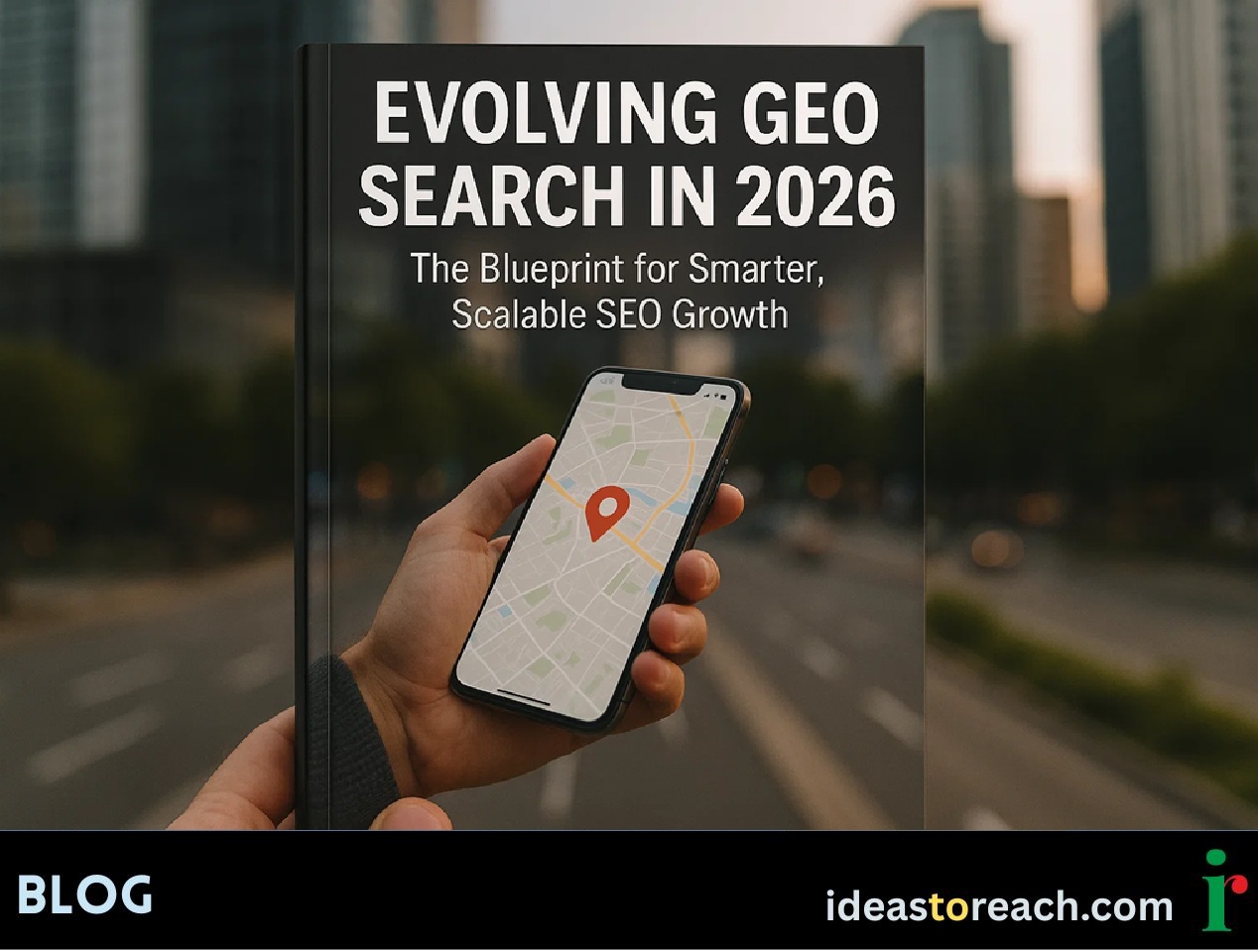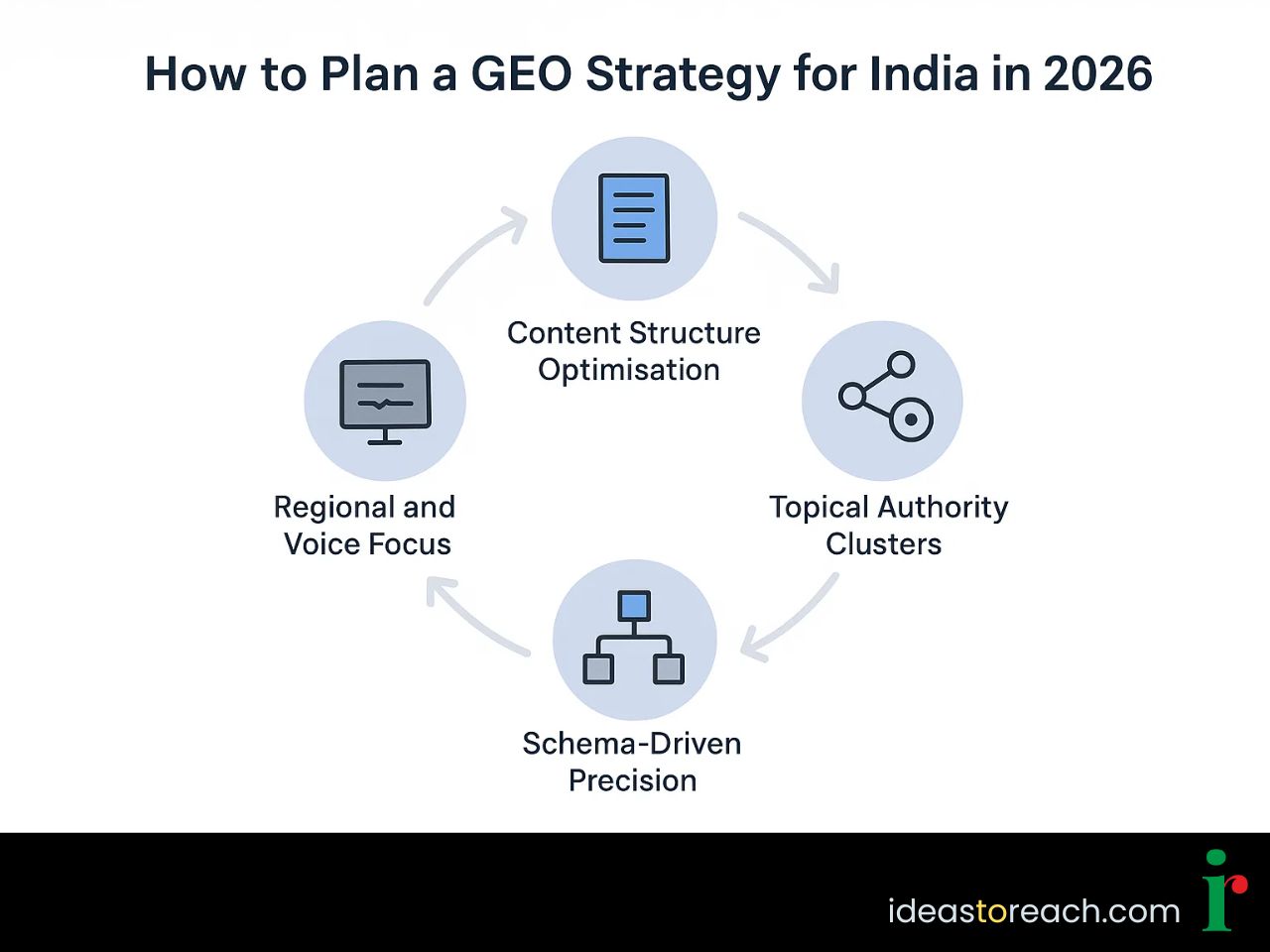
India’s digital ecosystem is transforming rapidly, laying the groundwork for AI‑driven search experiences that go far beyond traditional SEO. The arrival of generative engine optimisation in India for 2026 is reshaping how marketers plan, measure, and scale visibility. As voice search, AI chat assistants, and zero‑click results dominate user journeys, Indian brands must evolve with a GEO search strategy in 2026. It's a future‑ready approach that marries contextual intelligence with technological precision.
Generative Engine Optimisation (GEO) will be the defining search trend of the next decade. It challenges marketers to optimise not just for Google’s SERPs, but for AI‑powered engines like ChatGPT, Gemini, and Perplexity that summarise and cite answers directly. For businesses targeting the Indian market, this marks the era of intelligent, AI-first SEO India, where structured data, topical authority, and trust‑built content drive discoverability.
Traditional SEO focused on ranking in the ten blue links, but GEO vs SEO in 2026 is a strategic shift. While SEO measures success by keywords and backlinks, generative search optimisation in India targets content being cited by AI outputs. It’s about being the source of truth.
Generative Engine Optimisation (GEO) ensures content appears in AI-generated answers, cited by systems like Gemini or Perplexity. To understand the impact of AI on SEO and its effect on link signals, Indian marketers must optimise content and use tools like the Disavow Tool for 2025 to manage backlinks effectively.
The Indian digital market is among the fastest to adopt new search formats, from voice to visual and now AI‑generated. With over 700 million smartphone users and multilingual audiences, generative engine optimisation in India for 2026 is not optional as it’s strategic survival.
Generative search transforms mobile experiences through faster, conversational, and multilingual context answers.
Indian businesses adopting AI‑driven search optimisation outperform those relying solely on classic SEO.
GEO influences brand trust, as users view AI‑cited content as authoritative.
This evolution aligns strongly with Google’s content credibility principles. Learn why E-E-A-T in SEO remains vital in ensuring your GEO content stands out as authentic, expert-backed, and trustworthy. Also, GEO becomes the digital handshake of trust between humans and machines. Businesses that prepare their content architecture for AI-driven discovery today will own tomorrow’s visibility.
Most marketers now ask: “How to plan a GEO strategy for India in 2026?” The process begins by redefining success metrics and building AI-friendly content ecosystems. You can start by following a structured framework similar to what’s outlined in this SEO Roadmap Guide.
Craft clear, conversational, and well‑structured writing. Implement FAQ sections, bullets, and schema markup with structured data, especially for FAQPage, HowTo, or Article types.
Build content hubs around high‑intent topics relevant to Indian audiences, ensuring internal linking depth and E‑E‑A‑T alignment.
Prioritise voice search & AI search India trends with multilingual coverage. Integrate voice-optimised keywords in Hindi, Tamil, and regional dialects for relevance.
Deploy schema for reviews, FAQs, and how‑to guides. This not only aids AI comprehension but also fuels zero‑click citations.
Track brand mentions, AI‑citations, dwell time, and voice discovery performance using tools built for AI‑based visibility.
Such a strategy provides the framework to scale GEO in India, ensuring resilience as Google and OpenAI evolve search behaviour patterns.

Here are the steps to evolve your search strategy for AI-driven search in India:
Map your current content against AI search trends in India and identify gaps in question‑based visibility.
Repurpose existing blogs into AI‑consumable content, emphasising semantic relevance and conversational flow.
Incorporate E‑E‑A‑T signals by citing credible data, case studies, and regional insights.
Experiment with AI‑based SEO tools and frameworks that analyse AI‑driven mentions rather than traditional backlinks.
Educate internal teams on AI-first SEO in India as a holistic view combining human creativity and machine curation.
This transition helps marketers grasp “what’s changing in Indian SEO in 2026 with AI and GEO.” The shift demands adaptability, understanding generative AI algorithms, and structuring data that AI systems can interpret easily.
Generative Engine Optimisation (GEO) is the practice of optimising content so AI-powered search systems (like ChatGPT, Google Gemini, Perplexity) can understand, extract, and cite it when generating answers. In India, by 2026, this matters because users increasingly rely on AI assistants and voice search rather than traditional links. Therefore, being cited by AI becomes as essential as ranking.
FinTech Leader: A major NBFC restructured its blog network using structured FAQs and AI-readability scoring. As a result, its brand citations in Gemini’s answer clusters grew by 40% within three months.
E-commerce Retailer: By adopting a schema for product FAQs and conversational keywords in Hindi, this retailer gained early citations on Perplexity’s product searches.
EdTech Platform: Focused on “how-to” schema and AI‑optimised metadata to dominate AI‑assisted learning searches, increasing zero‑click visibility significantly.
These case studies of Indian brands evolving their GEO search strategy underline one truth: GEO isn’t just technical, but it’s about rethinking digital storytelling for machine understanding.
Several tools are emerging to help businesses measure and iterate on GEO progress:
MarketMuse / Clearscope for semantic topic enrichment.
Schema.org / Rank Math for structured data automation.
ChatGPT SEO plug‑ins that test AI result citations.
Google Search Console (Experimental AI Reports) to track AI-driven impressions.
Perplexity and Gemini monitoring for citation frequency checks.
Additionally, with the advent of Chrome AI Mode, search interactions are becoming more dynamic. This will encourage Indian marketers to test AI-enhanced visibility directly from their browsers.
Metrics include brand mentions in AI-generated answers, frequency of citations, voice impressions, zero-click traffic, and AI-assisted referrals. Traditional indicators like dwell time and SERP ranking remain crucial baselines, but GEO demands a broader insight lens.
Marketers in India must track the search strategy in India for 2026 benchmarks, combining AI citation frequency with engagement depth. This fusion determines authority and adaptability within evolving AI discoverability networks.
The evolution doesn’t invalidate conventional tactics. Generative engine optimisation in India for 2026 complements SEO and AEO. But, it doesn’t replace them. Traditional SEO still drives clicks for transactional and navigational searches, while GEO builds influence in zero-click and AI dialogue ecosystems.
In simpler terms, the best-performing Indian websites of 2026 will follow a hybrid model:
SEO + AEO + GEO = Sustainable Visibility.
This approach secures both human and AI audiences as perfect alignment with a future dominated by machine-assisted decision-making.
The future of SEO in India for 2026 moves toward optimisation that goes beyond ranking pages. Hence, it’s all about preparing content ecosystems for AI comprehension, multilingual delivery, and predictive logic.
With India’s billion-device mobile economy and fast-rising voice-first culture, mobile-first indexing, structured schema, and ethical AI frameworks will be the pillars of growth. As a Google Partner in Chennai, Ideas to Reach helps Indian brands align with this AI-first evolution through customised GEO strategies that strengthen authority and visibility across platforms.
So, this transformation toward GEO isn’t just about algorithms, but it’s about redefining digital visibility.
GEO focuses on being cited in AI‑generated results, while SEO targets rankings in SERPs. GEO aligns with conversational, structured, and context-rich optimisation.
Begin with structured content, FAQs, schema markup, and AI visibility tracking tools. Build credibility and ensure multilingual readiness to capture diverse voice queries.
Yes. Voice and AI search heavily overlap. GEO-ready content ensures your brand appears in spoken results and assistant‑driven responses.
Definitely not, but AI will redefine it. GEO and SEO will function together as one powering AI visibility and the other sustaining conventional web traffic.